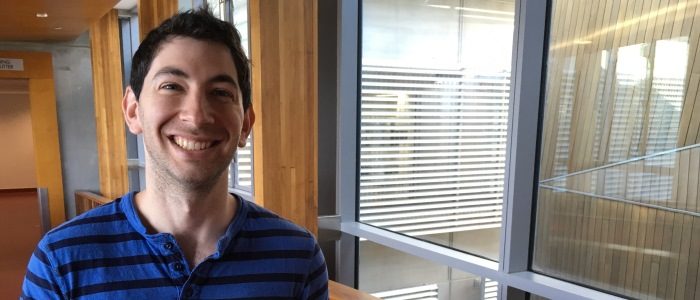News
3D printing bone tissue
Jun 28 2022
Biofabrication Masters student Ariel Cherny says the best part about his day is that he doesn’t know what will happen.

“Every day I encounter some new concept, method of analysis, or problem which I need to learn, apply or overcome and this keeps me engaged,” he said.
“Coming from a physics background, everything about biofabrication is a fresh start for me.”
The Melbourne University science graduate says his interest in this field was piqued when his mum found an article in the paper about the degree in the paper.
“I had been looking for a new field to get into and just happened upon it in the paper by chance,” he said. “My interest was two-fold: firstly, biofabrication is an emerging field, which almost guarantees innovative work and secondly, it is a multidisciplinary field. It has been fascinating to see how researchers from all different backgrounds—chemistry, engineering and biology—combine their expertise to develop projects which would not have been considered feasible even ten years ago.”
3D printing drug release systems to treat epilepsy
Ariel is investigating the use of 3D printing in creating tailored drug release systems for use in brain implants to treat epilepsy.
The implant is a long-term project that ACES has been working on in collaboration with Professor Mark Cook and others clinicians at the University of Melbourne.
Cook developed the technology to detect seizures in a world first study in 2010. The detection system constantly monitors electrical activity in the brain and calculates the risk of a seizure, then transmits that information to a personal device similar to a pager. Patients are able to make decisions based on this information, such as calling for help or taking a fast acting drug.
The ability to predict an oncoming seizure has opened up new therapeutic opportunities, such as building in a device that releases anti-seizure or prophylactic drugs, directly to the brain.
Ariel is looking at the role 3D printing can play in developing this device.
“This is the first trial using additive manufacturing in the creation of complex drug release systems, and could pave the way for more complex systems tailored to the individual,” he said.
Ariel’s feasibility study focuses on three main areas:
Ariel said the anti-epileptic is a replacement for the daily oral medication taken by epilepsy sufferers, and the anti-inflammatory lessens the likelihood of inflammation after surgical implantation.
If successful, the implant could be a treatment option for the 15 million epilepsy patients worldwide whose illness cannot be managed using conventional surgery or oral medications.
“I have already found there are indeed benefits to 3D printing, especially in the ability to replicate samples quickly with slight variations in specific parameters. This variation does in fact lead to quite a large difference in how the drug is released over time,” Ariel said.
“As for the multi-drug polymer systems, there are innumerable possibilities with regards to structure, even without varying the polymers or drugs used.”
More research opportunities on exchange in Germany
Once Ariel’s study is written up, he will travel to Germany, where he will spend 10 months working at the University of Wurzburg, as part of the international exchange component of the degree.
“The benefits of the exchange program are numerous,” he said. “First and foremost, this trip gives me the opportunity to learn new skills and hone others whilst working on a different field of research in a different lab. Never turn down opportunities to expand your knowledge!” he said.
“It also allows me to establish connections throughout Europe and gives me a greater understanding as to where Biofabrication is today and where it is going in the future,” he said.













